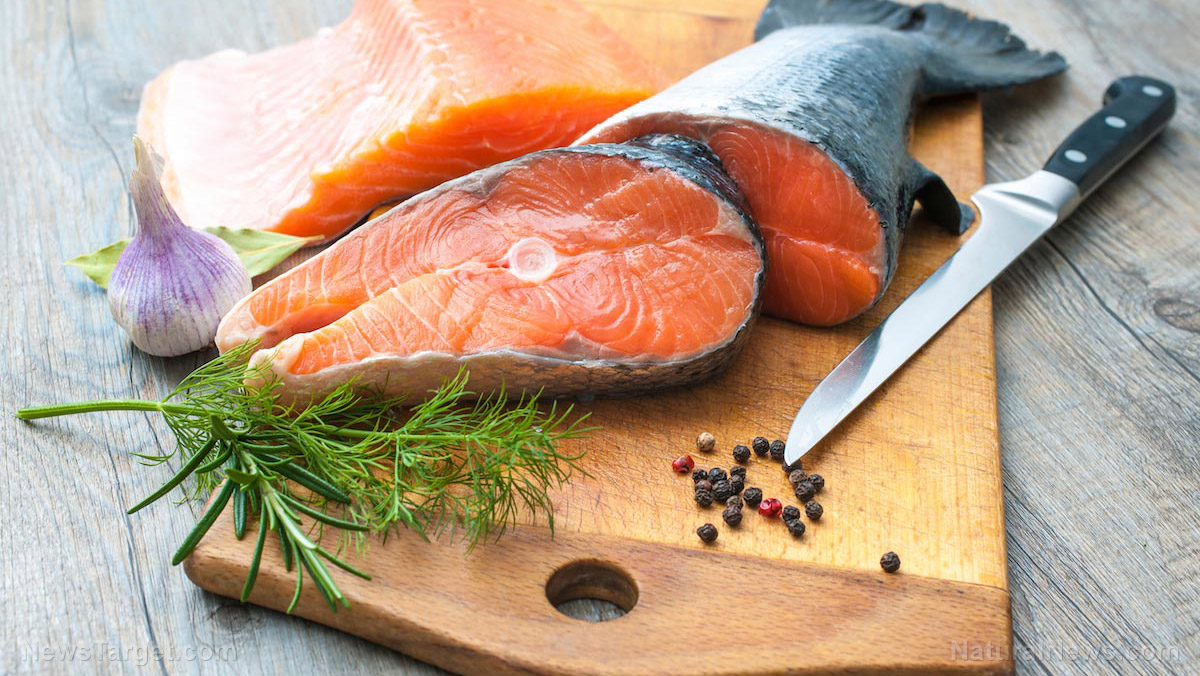The seafood counter at a grocery store usually offers two kinds of fish: farm-raised fish or wild-caught fish. And while certain fatty fish like salmon offer many health benefits, some of them are also linked to health risks thanks to contaminants.
According to a study, you can avoid these health risks if you choose wild-caught fish. Farm-raised fish often have fatty livers, and consuming them may result in negative health consequences.
Why farm-raised fish are unhealthy
Study findings show that fatty liver has become very common in fish raised on farms. Eating them is bad for your health because the disease reduces the fish’s growth and nutritional quality. Fatty liver can also impair the fish’s immune response.
While researchers have yet to determine a definitive cause of fatty liver in farm-raised fish, they think one of the biggest contributors is the unbalanced nutrition and excess energy intake that occurs as a result of overfeeding. Farm-raised fish also consume foods deficient in essential vitamins and a diet that includes excess carbohydrates and dietary fats.
The researchers said fatty liver in farm-raised fish can be prevented by feeding them a more nutrient-balanced diet, giving them fresh feed and keeping the water environment healthy.
Health risks linked to eating farm-raised fish
Other studies associate various health risks to the consumption of farm-raised fish.
One of the key differences between farm-raised and wild-caught fish is their nutrition. A three-ounce fillet of wild-caught salmon has fewer calories and half the fat content of the same serving of farmed salmon.
And while farm-raised salmon may have more omega-3 fatty acids, it also has more than double the saturated fat, which is bad for you.
A diet full of saturated fats can increase your total cholesterol and tip the balance toward the more harmful LDL (low-density lipoprotein) cholesterol, which can cause blockages in your arteries. This is why nutrition experts recommend limiting your consumption of saturated fat to under 10 percent of your total daily calories.
When you eat commercially-produced fish, you are also at risk of exposure to organic pollutants, which are at least five to 10 times higher in farmed fish and have been linked to diseases like obesity and Type 2 diabetes.
Additionally, farm-raised fish grown in crowded conditions are fed antibiotics to fight diseases. This practice contributes to the spread of antibiotic resistance, which the World Health Organization has declared to be a global health threat.
Research has also found that the contaminant levels in farmed salmon are higher than in wild-caught salmon. This means that farm-raised fish are considerably less safe to eat than wild-caught fish. To avoid exposure to harmful pollutants, shop for wild-caught fish, the more nutritious, safer option.
5 Healthiest fish to eat
Here are five nutrient-dense fish that you can incorporate into your regular diet.
Salmon
Salmon is a popular fish because it’s full of “good” fat, calcium and vitamin D. Since wild-caught salmon is found in its natural habitat, it is less exposed to contaminants and processed fish food.
Tuna
Tuna is great for when you don’t have a lot of spare time for meal prep. You can make a tasty tuna salad or add it to a veggie salad for a nutritious and easy to prepare lunch.
Tuna is full of omega-3s, selenium and vitamin D. Selenium is an essential mineral that acts as a powerful antioxidant.
Pacific cod
Cod is a great fish to eat for people who don’t like seafood since it has a milder flavor that picky eaters and kids can enjoy. Cod is often used for fish and chips. When grilled or baked, cod is low in fat and rich in protein.
Sardines
Sardines are a little fishy and have a strong taste. But if you get past those hurdles, sardines offer many health benefits.
Sardines have tiny, edible bones that are a dairy-free source of calcium, along with iron and selenium. If you want to try eating sardines, serve them on crackers for a quick, hassle-free snack.
Halibut
Halibut is a firm, white fish with a mild flavor. It’s a kid-friendly option and you can serve it grilled or use it for fish sticks. It is full of vitamins and minerals like magnesium, phosphorus, selenium and vitamins B6 and B12.
But since it has more mercury than the other options, limit your consumption to just once or twice a week. food.news.



